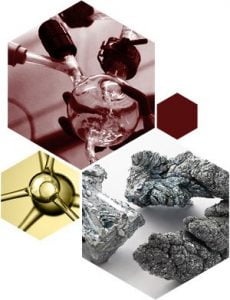
Bismuth (III) Chloride
Properties
- We can offer items in bulk or custom. For other quantities or purities, please request a quotation.
- All prices are subject to change.
Related Products
Information about Bismuth (III) Chloride / CAS 7787-60-2
Bismuth (III) Chloride (BiCl3), is notable for its applications in various industrial and research domains, attributed to its unique chemical and physical properties. It serves as a versatile reagent in both organic and inorganic synthesis.
In organic chemistry, it is employed as a Lewis acid catalyst, facilitating various reactions such as Friedel-Crafts alkylation and acylation. Its efficacy as a catalyst is attributed to its ability to accept electron pairs, thereby activating electrophiles and promoting reaction pathways. It has been explored for its role in accelerating chemical reactions, particularly in the synthesis of various organic compounds and in green chemistry initiatives, where it supports environmentally friendly processes by enabling lower-energy chemical transformations.
Additionally, bismuth-based compounds have potential applications in electronics, particularly in the development of superconducting materials and thermoelectric devices. Bismuth Trichloride has also been employed in the creation of bismuth-based nanomaterials used for energy storage devices such as supercapacitors and lithium-ion batteries. These nanomaterials are crucial in enhancing the performance and longevity of energy storage systems, offering potential improvements in renewable energy applications.
Bismuth (III) chloride is a versatile catalyst and valuable precursor for material. It’s applications in electronics, materials science, and catalysis continues to grow, owing to its low toxicity and chemical stability.
- Répichet, S., Le Roux, C., Dubac, J., & Desmurs, J. R. (1998). Bismuth(III) Trifluoromethanesulfonate: A Chameleon Catalyst for the Friedel–Crafts Acylation. European journal of organic chemistry, 1998(12), 2743-2746.
- Le Roux, C., & Dubac, J. (2002). Bismuth(III) Chloride and Triflate: Novel Catalysts for Acylation and Sulfonylation Reactions. Survey and Mechanistic Aspects. Synlett, 2002(02), 0181-0200.
Safety
- H315 Causes skin irritation.
- H319 Causes serious eye irritation.
- P264 Wash skin thoroughly after handling.
- P280 Wear protective gloves/protective clothing/eye protection/face protection.
- P302+P352 IF ON SKIN: wash with plenty of soap and water.
- P305+P351+P338 IF IN EYES: Rinse cautiously with water for several minutes. Remove contact lenses, if present and easy to do. Continue rinsing.
- P332+P313 IF SKIN irritation occurs: Get medical advice/attention.
- P337+P313 IF eye irritation persists: Get medical advice/attention.
- P362 Take off contaminated clothing and wash before reuse.


